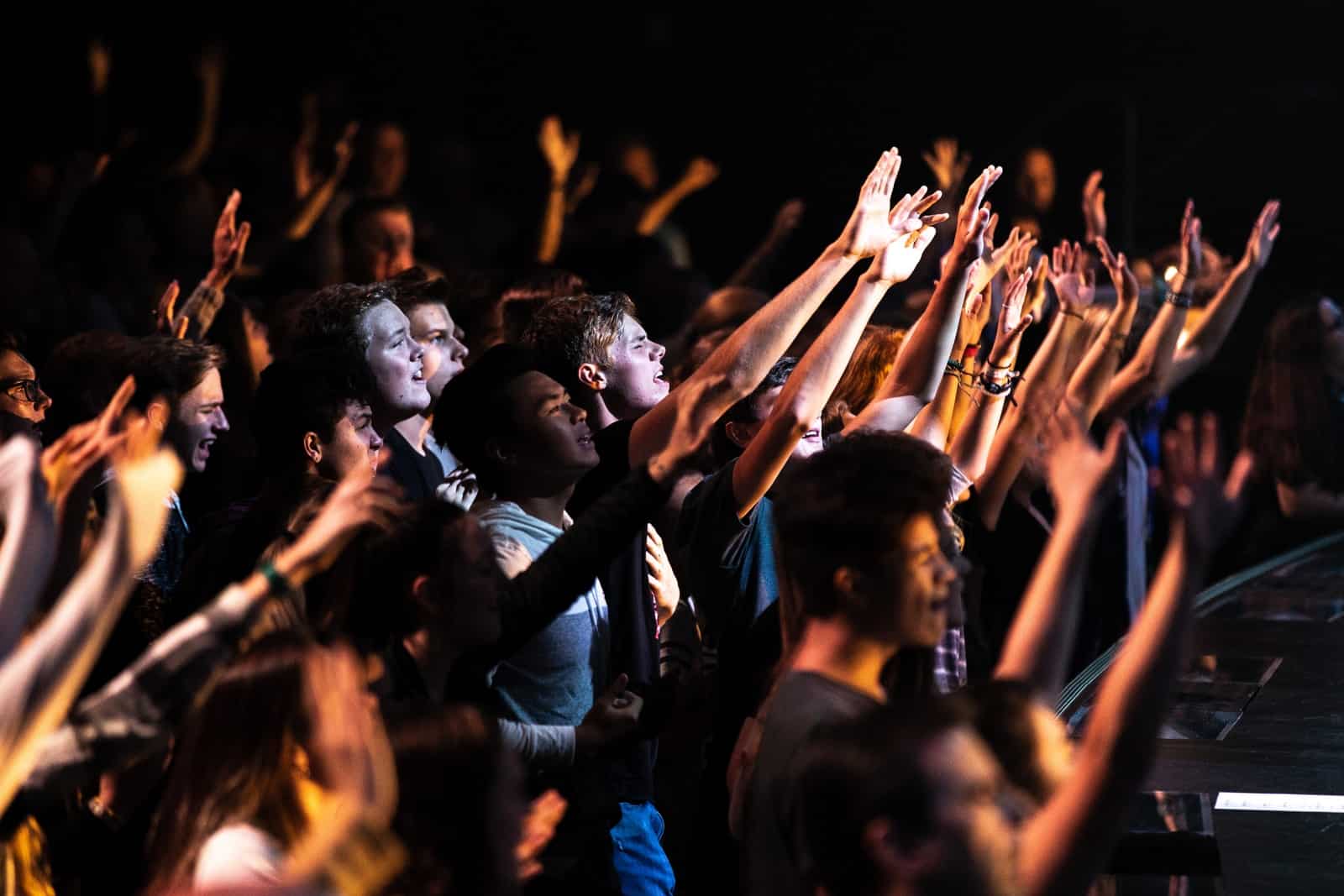Perform a Google search on the word “worship” and examine the “images” category. In my search, nine of the first ten images depict multiple people with their hands raised. The emoji for “praise” pictures two lifted hands.
Why is raising of hands in worship such a common practice (at least in America)? In this blog post I hope to address the following:
- The misapplication of 1 Timothy 2:8 to support raising hands in worship;
- What the Scripture says about lifting of hands;
- Why this has become so common in worship.
Raising Hands in Scripture
About twenty years ago, I attended a worship service where the senior pastor repeatedly exhorted the congregation to “raise holy hands.” He pointed to 1 Timothy 2:8 to support his instructions. When discussing the issue of lifting hands in worship, people generally point to this passage for biblical justification. I hope to show why this common interpretation and application is fallacious.
1 Timothy 2:8 says, “I desire then that in every place the men should pray, lifting holy hands without anger or quarreling” (ESV). These verses specifically apply to worship (in this case prayer) in the church. The broader context addresses, “how one ought to behave in the household of God, which is the church of the living God” (1 Tim. 3:15). 1 Timothy 2:8 specifically states:
- Who should raise hands—”men”
- When they should raise hands—in prayer
- What their hands should be like—”holy”
- What should not characterize their praying—”without anger or quarreling”
In this passage, Paul clearly delineates some of the differences in male and female roles in the church (2:9 begins Paul’s instructions for women). Since this passage is specifically addressed to men, Christians should not employ it to call everyone to raise their hands.
Furthermore, this command for men relates to a specific activity: prayer (more on this below). The Apostle also requires that these men be holy and not angry or quarreling (which appears as a common feature of the false teachers Paul addresses in 1 Timothy). This text is simply not a call for the whole church to raise their hands while they worship.
What does this passage mean? In ordering worship for the church, men should lead in prayer, raising their hands when they pray, be holy, and not be angry or quarrelsome. It’s ironic that so many apply this passage to raising hands while singing, but rarely to a man while praying.
The New Testament rarely addresses the issue of raising hands. One can find three other instances, none of which appear in the context of church worship (Luke 24:50; Rev. 10:5-6; Hebrews 12:12). Therefore, no examples or commands for all Christians to lift their hands in worship can be found in the NT.
The Old Testament, however, contains several references to the raising of hands. These examples include:
- To pray: 1 Kings 8:22–23, 54-55; Psalm 28:2; Lamentations 2:19; Habakkuk 3:10.
- To bless others: Leviticus 9:22; Psalm 63:4; 134:2; 141:2; Luke 24:50 is probably a NT example.
- To swear: Genesis 14:22; Exodus 6:8; Nehemiah 8:6; See Revelation 10:5–6 for a NT equivalent.
- To set about to accomplish some important matter, like fulfilling a vow: Genesis 41:44; Psalm 10:12. See Hebrews 12:12 for a NT equivalent.
In 1 Timothy 2:8, Paul draws on the OT practice of lifting hands in prayer (#1 in the summary above).
Based on the OT evidence, the best case or justification for raising hands in worship can be found in Psalm 134:2 and 141:2 (from # 2 in the summary above). These two examples give rise to several questions the serious student of the Bible needs to address:
- What is the nature and purpose blessing others in the OT?
- How is the lifting of hands related to OT blessing?
- Why was it done?
- What does it mean?
- Is it legitimate to call upon all Christians to raise hands in worship based on these references?
Why We Do What We Do in Worship
At this point, many might say, “This is nit-picky—why are you concerned about this? Just let people worship the way they want.”
As Christians, we want to accurately interpret and apply Scripture. The importance of worship requires that it be given significant attention, especially from pastors and those who lead others in worship. We should consider it a serious matter for a leader or teacher to misinterpret and misapply any text that affects how the church worships God.
Because of the nature and sufficiency of Scripture, we should derive our practices of worship from Scripture alone. I fear that many people derive their worship practices primarily from the example and experience of others. How do people learn to worship? Generally, the same way they learn to do other things—by example.
Let’s consider a hypothetical example:
Matilda gets born-again, begins loving the Lord, and desires to worship with her church. When her church gathers, all the people raise their hands while singing praises to God. It’s likely Matilda will begin raising her hands as she sings—Why? Because of her experience, and the conditioned behavior of her fellow worshipers.
Here’s another hypothetical example:
Gil is a Christian twelfth grader. He goes to a large conference with his student group. The worship band exhorts everyone to raise their hands and sway. Like most of his 5,000 fellow students, Gilbert raises his hands and begins swaying with the crowd—Why? Because the crowd was exhorted to do so by the band, and all his friends complied. Meanwhile, many student leaders look on, and based on this outward expression say, “Wow, they are really worshiping!”
Here are some poor motives/reasons for lifting hands in worship:
- Because other people are doing it (your Mom was right!).
- Because other people pressure you to do it.
- Because you’ve always done it and never given it much thought.
Our expressions of worship should arise from being convinced that God commands or commends them in his Word. We don’t want our worship to merely be learned behavior based on the example of others. We want to derive our worship practices from Scripture (what God says), not experience.
Here’s another question: Given that the practice of everyone lifting their hands in worship is not found in the NT, why has it become such a popular and common practice in churches? This probably stems from the following:
- A misapplication of 1 Tim. 2:8, and
- Worship experiences and examples where the raising of hands is the norm.
Final Considerations
Christians should not allow the practice of raising of hands in worship to lead to what Paul prohibits in 1 Timothy 2:8—quarreling. As with all matters, we should search the Scriptures and base our faith and practice on what God says in His Word.
We also need to recognize our context: In America many Christians (genuine born-again believers) have only experienced worship in which everyone raises their hands. Many have never considered this expression in light of the Scripture. In our desire to make disciples, we should humbly and patiently sit down with other believers and talk about all our worship practices with our Bibles open.
I personally think the issue of raising hands in worship falls in the category of “opinions” Paul addresses in Romans 14–15. In addressing this issue with others, we should follow his counsel and, “pursue what makes for peace and for mutual upbuilding” (Rom 14:19).




